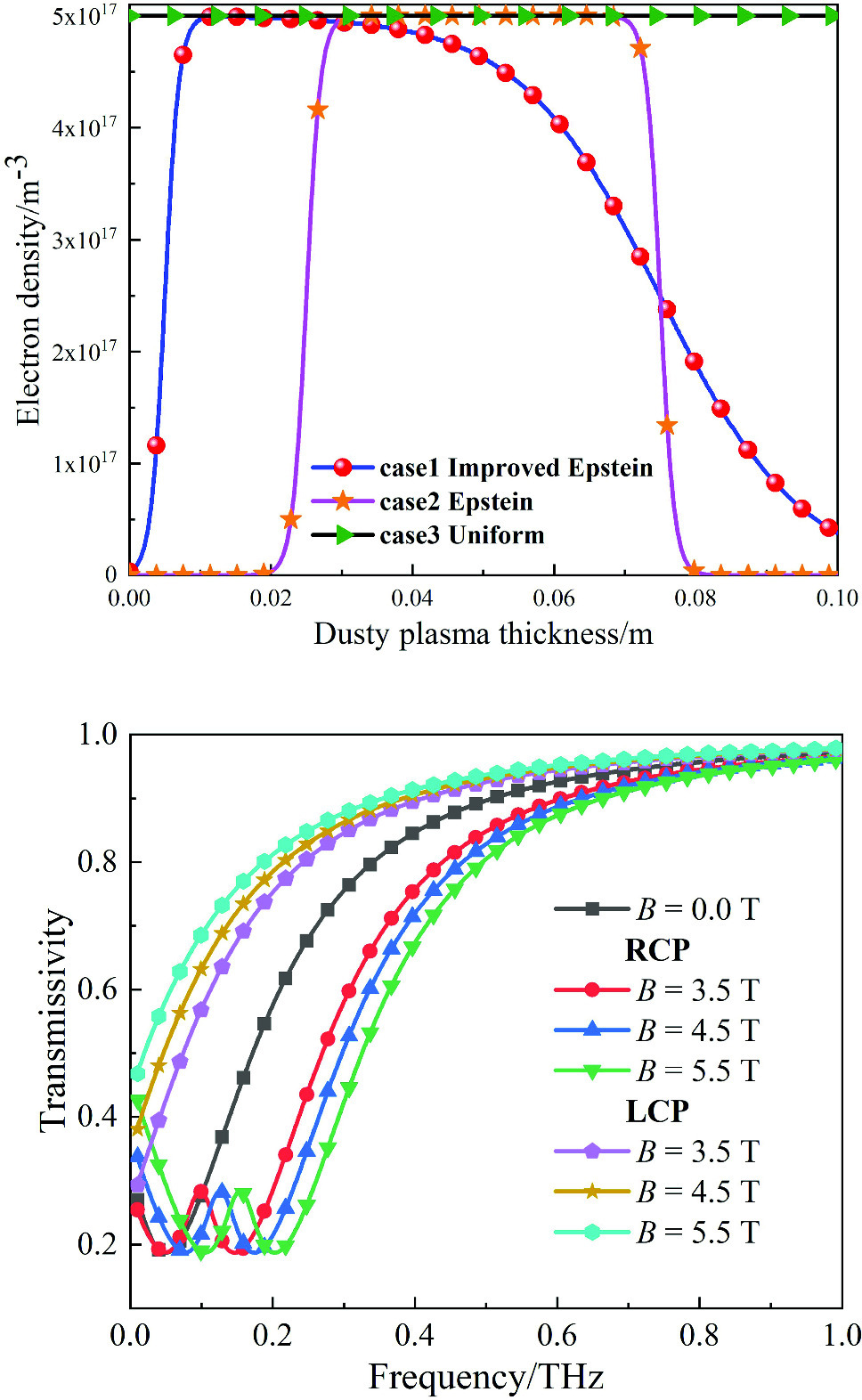https://doi.org/10.1140/epjd/s10053-024-00824-8
Regular Article - Plasma Physics
SO-FDTD simulation on the transmission characteristics of terahertz waves in inhomogeneous magnetized dusty plasma
1
College of Physics and Electronic Engineering, Northwest Normal University, 967 Anning East Road, 730070, Lanzhou, Gansu, People’s Republic of China
2
Laboratory of Atomic Molecular Physics and Functional Material, 967 Anning East Road, 730070, Lanzhou, Gansu, People’s Republic of China
3
The School of Mathematics and Physics, Lanzhou Jiaotong University, 88 Anning East Road, 730070, Lanzhou, Gansu, People’s Republic of China
h
songyan@nwnu.edu.cn
j
shiyr@nwnu.edu.cn
Received:
12
April
2023
Accepted:
8
March
2024
Published online:
25
March
2024
The transmission characteristics of terahertz waves in inhomogeneous magnetized dusty plasma are studied by using the shift-operator finite-difference-time-domain (SO-FDTD) method. The Epstein distribution model is employed to simulate the electron density distribution in dusty plasmas. The results given by the SO-FDTD method are in good agreement with those gotten by the Wentzel–Kramers–Brillouin method. Both the left-hand and right-hand circularly polarized (LCP and RCP) waves are taken into account. The transmission characteristics of RCP waves are more complicated than LCP waves. The numerical results show that all the physical parameters, such as the electron density, dust particle density, dust particle radius, effective collision frequency, electron relaxation rate and external magnetic field intensity, and so on, can affect the propagation, absorption and reflection of terahertz waves in dusty plasma. These theoretical results may be useful for alleviating the “blackout” problem and improving electromagnetic waves communication.
Yu-Ren Shi and Yue-Xing Zhao contributed equally to this work.
Copyright comment Springer Nature or its licensor (e.g. a society or other partner) holds exclusive rights to this article under a publishing agreement with the author(s) or other rightsholder(s); author self-archiving of the accepted manuscript version of this article is solely governed by the terms of such publishing agreement and applicable law.
© The Author(s), under exclusive licence to EDP Sciences, SIF and Springer-Verlag GmbH Germany, part of Springer Nature 2024. Springer Nature or its licensor (e.g. a society or other partner) holds exclusive rights to this article under a publishing agreement with the author(s) or other rightsholder(s); author self-archiving of the accepted manuscript version of this article is solely governed by the terms of such publishing agreement and applicable law.





